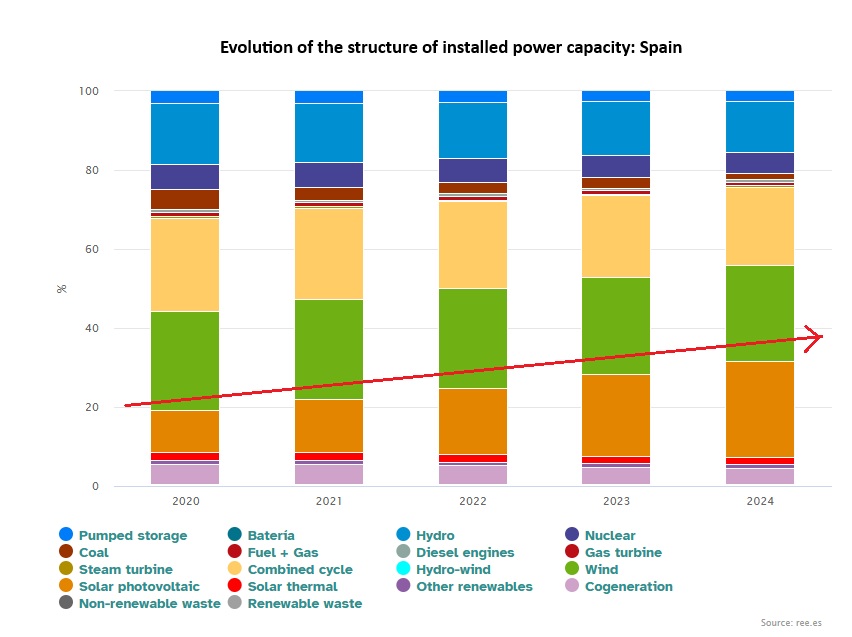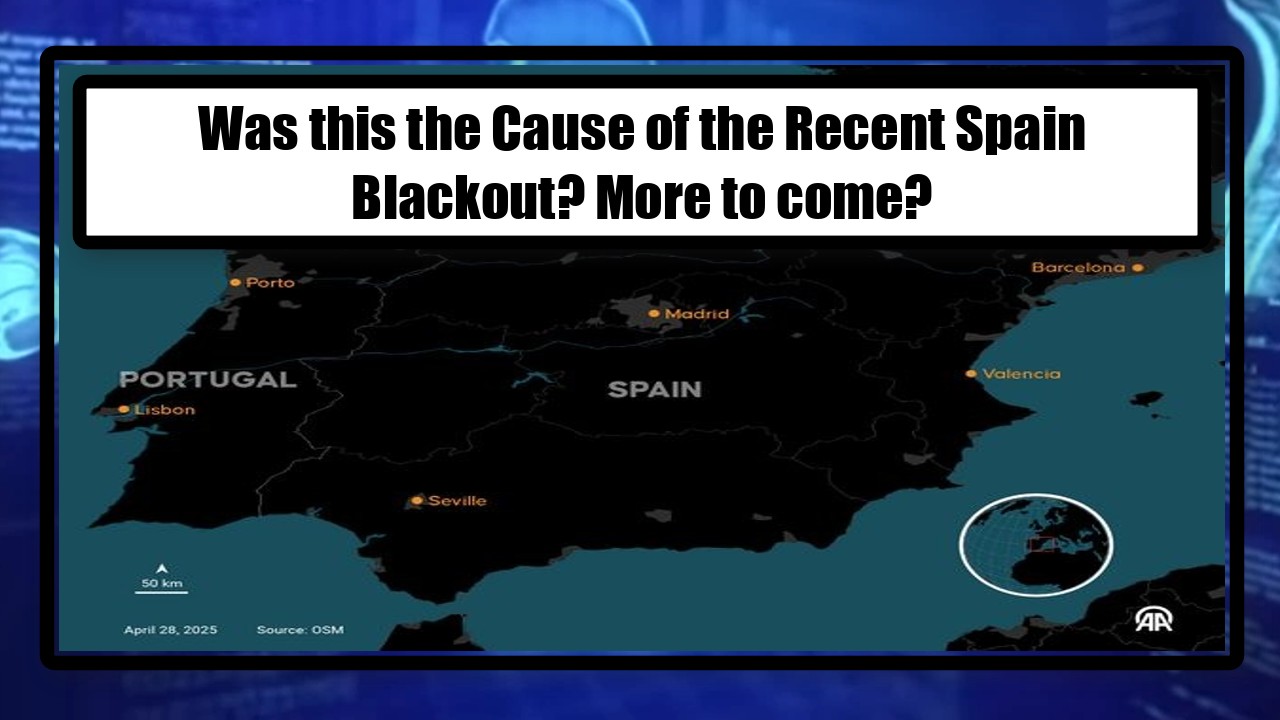Video:
Take our online poll:
AI Analysis:
Spanish blackout AI analysis:
When a cloud passes over a solar panel, the power output can drop significantly — but the exact percentage depends on the thickness and type of cloud cover.
On average: Light clouds (thin, wispy clouds): power may drop by 10–30%. Moderate cloud cover: expect a 30–70% reduction. Heavy, dense clouds (thunderclouds, overcast): the output can drop by 80–90%, or more in extreme cases. In very thick cloud cover, output may be reduced by over 95% compared to full sun.
Important Note:
Sometimes during scattered cloud conditions, there can be brief power spikes above normal (up to 130%) due to cloud edge enhancement — sunlight reflecting and focusing from nearby cloud edges.
⚡ Scenario:
A national grid relies on solar for 43% of its electricity.
Cloud cover causes a 30% reduction in solar output, so:
0.30×43%=12.9%0.30×43%=12.9% total grid supply loss.
The grid suddenly loses ~13% of its power input.
🔁 Can the grid reconfigure automatically?
In modern, well-managed grids, the answer is: ✅ Yes — to a point.
Most advanced grids have: Automatic frequency regulation Spinning reserve (fast-ramping backup like gas turbines) Battery storage systems (grid-scale) Demand response programs (temporarily lowering usage)
These allow the grid to respond within seconds to minutes to fluctuations.
🚨 If it cannot recover or reconfigure in time:
Here are potential issues:
Grid Frequency Instability
Supply-demand imbalance causes frequency to drop (e.g., below 50/60 Hz).
Can damage equipment or cause shutdowns in sensitive systems.
Blackouts or Brownouts
Load shedding might be required — selectively cutting power to certain areas.
Partial system collapse or a cascading failure is possible if uncorrected.
Grid Inertia Loss
Renewables have low mechanical inertia.
Loss of inertia reduces the grid's ability to absorb shocks.
Overstrain on Backup Systems
Rapid ramp-up from fossil backups may not be possible in underdeveloped grids.
Batteries may not have enough capacity for large gaps.
Economic Disruption
Industries relying on constant power (manufacturing, data centers) are especially vulnerable.
🧠 Real-World Mitigation Tools: Modern grids are increasingly designed with: Real-time solar forecasting (using satellite and weather data) Hybrid systems (solar + wind + storage + hydro + gas) Smart grid controls (AI-based demand/supply balancing)
Countries like Germany, California, and Australia have pioneered methods to handle high solar penetration.
Chart:

References:


Comments